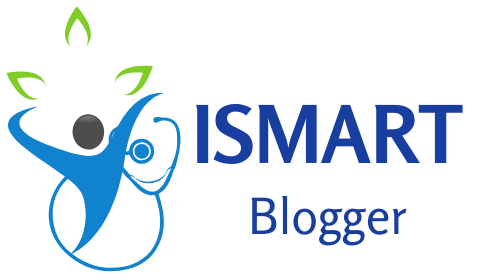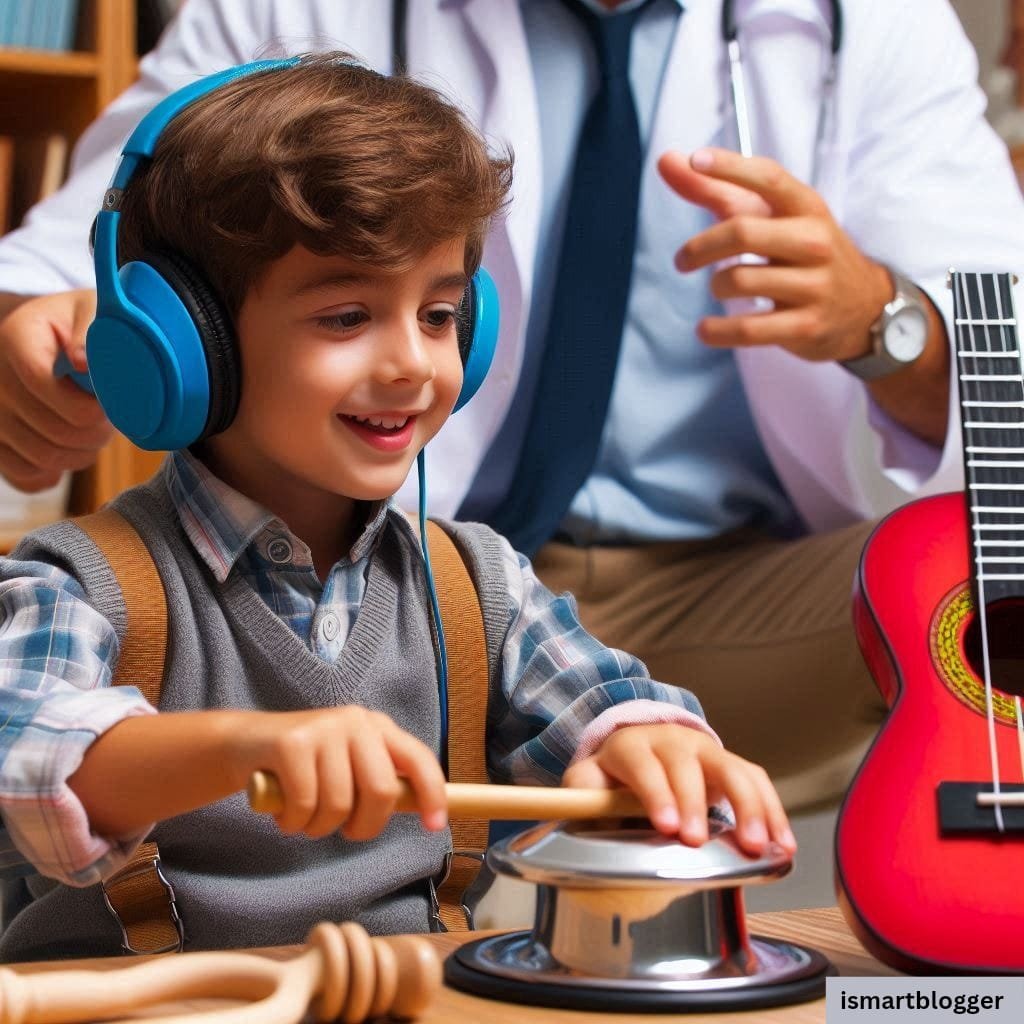Unlock Healing: Music Therapy for Children’s Emotional Challenges
Explore how music therapy aids children with emotional and behavioral challenges, through techniques, case studies, and measurable benefits.
Unraveling the Harmony: An In-depth Look at Music Therapy and Its Role in Assisting Children with Emotional and Behavioral Challenges
The Therapeutic Symphony: Defining Music Therapy
Music therapy, an amalgamation of art and science, is a therapeutic intervention that employs music to address physical, emotional, cognitive, and social needs. As an evidence-based practice, it goes beyond merely listening or playing music. It involves a credentialed professional—referred to as a music therapist—utilizing clinically-adapted music interventions to foster connections and facilitate positive change.
This therapeutic modality caters not only to individuals but also groups across various ages and abilities. It is highly individualized; therapists design interventions based on the client’s needs, preferences, and response patterns.
These interventions may include creating music compositions together or analytically engaging with lyrics. This individualization ensures that each therapy session is as unique as the person for whom it’s designed.

Synthesizing melody with medical practice becomes more than just a ‘feel-good’ endeavor; its tangible benefits place it firmly within the scope of therapeutic treatments. The power of this practice lies in its ability to draw forth emotions when words fail or are inaccessible—a common challenge among children struggling with emotional or behavioral issues.
Decoding the Melody: Understanding Emotional and Behavioral Challenges in Children
Emotional and behavioral challenges in children refer to a complex constellation of issues hindering their emotional well-being or disrupting normal behavioral functioning. These difficulties may manifest themselves as persistent feelings of unhappiness or fear, hyperactivity, defiant behavior towards adults or trouble getting along with other children.
Such challenges often trace back to myriad factors like genetics, brain disorders, trauma exposure or unstable family situations—and sometimes they are intermingled. While these emotional and behavioral problems may be common during particular phases of childhood, the severity or persistence of these issues may pose significant obstacles to a child’s academic success, social interactions, and overall quality of life.
Furthermore, children with these difficulties often find it hard to express themselves adequately. They may struggle to articulate their feelings or needs—a struggle that can exacerbate their symptoms.
This inability to communicate effectively often leads to feelings of frustration and isolation. It is within this silence that music therapy can sing its tune—providing children with an alternative language to express themselves.
The Harmonious Intersection: Music Therapy in Child Psychology
The Role of Music in Child Development
Music is not merely a form of entertainment; it plays an essential role in child development. From the earliest lullabies hummed by parents to soothe their newborns, music penetrates into the fabric of our upbringing.
In infancy, rhythmic patterns akin to heartbeats offer solace and security. As children grow, they begin to respond to tempo and melody, which aids in fostering motor skills through actions like clapping or dancing.
These interactions with music aid not only physical development but cognitive as well, by stimulating brain areas responsible for spatial-temporal reasoning. During adolescence, music often becomes a tool for self-expression and identity formation.
Teens resonate with certain genres or lyrics that express their feelings or experiences, helping them navigate this tumultuous period. Overall, music has an indelible impact on a child’s emotional growth and cognitive maturation.
Psychological Theories Supporting the Use of Music Therapy
The benefits of music therapy can be understood through various psychological theories. The “Iso-principle” theory posits that music can match an individual’s current emotional state before slowly leading them towards a desired emotional state. In contrast, the psychoanalytic view suggests that music offers a non-threatening platform for expressing emotions buried within subconscious realms.
It provides symbolic communication where words may fail and supports catharsis by evoking emotions demanding release. Cognitive-behavioral theory advocates using music as a stimulus-response model where positive behavior is rewarded by pleasurable musical experiences.
This approach uses classical conditioning techniques where specific behaviors are reinforced through positive musical associations thus shaping conduct over time. Each of these theories attests to how profoundly influential music is on our psyche; hence its effective use in therapeutic contexts aimed at children grappling with emotional and behavioral difficulties.
Understanding Emotional and Behavioral Challenges in Children
The Labyrinth of Childhood Emotional and Behavioral Disorders
Children, much like adults, can experience a spectrum of emotional and behavioral challenges. These difficulties are not merely phases or tantrums; instead, they signify severe disorders that can impede a child’s daily functioning and development. Understanding these complexities is the first stride towards tailored intervention strategies, such as music therapy.
Types of Emotional and Behavioral Challenges
Emotional and behavioral disorders in children represent an intricate interplay between genetic predispositions, environmental influences, neurological anomalies, and psychological factors. They manifest as persistent patterns of emotions or behaviors that deviate from societal norms or expectations.
Anxiety Disorders
Anxiety disorders in children include generalized anxiety disorder (GAD), panic disorder, social anxiety disorder (SAD), separation anxiety disorder (SAD) amongst others. These are characterized by excessive worry or fear that hinders a child’s day-to-day activities. The prevailing symptoms may include restlessness, fatigue, concentration problems, irritability, muscle tension or sleep disturbances.
Mood Disorders
Defined by extreme fluctuations in mood, energy levels or activity levels that interfere with regular life activities – mood disorders encompass conditions such as depressive disorders and bipolar disorders. Precipitated by genetic vulnerabilities coupled with stressful events – these often result in feelings of sadness, irritability or even suicidal thoughts.
Conduct Disorders
Children with conduct disorders display a long-term pattern of actions violating the basic rights of others along with major societal norms/rules. This could manifest as aggression towards people/animals; property destruction; deceitfulness/theft; serious rule violations etc., leading to significant impairments in academic performance & relationships.
Attention Deficit Hyperactivity Disorder (ADHD)
A neurodevelopmental disorder typified by inattentiveness, hyperactivity, and impulsiveness – ADHD is one of the most common childhood disorders. Children with ADHD may experience academic difficulties, low self-esteem, impaired relationships or trouble with peers.
Causes and Effects on a Child’s Life
These disorders’ etiologies are multifactorial- encompassing genetic factors, physical illnesses/injuries to the brain, exposure to drugs/alcohol during pregnancy or traumatic experiences. The effects can be catastrophic – ranging from poor academic performance to stigmatization/isolation from peers; from family conflicts to an elevated risk for substance abuse/suicide. These challenges necessitate timely interventions like music therapy that not only address symptoms but also imbue coping mechanisms and resilience.
Music Therapy Techniques for Children with Emotional and Behavioral Challenges
Lyric Analysis
Lyric analysis is more than merely appreciating the melody or rhythm of the music. It involves a detailed examination of the song’s textual content, structure, and symbolic meanings. For children experiencing emotional and behavioral challenges, lyric analysis can be a therapeutic tool for self-expression.
It allows them to connect with their feelings, address concerns or fears indirectly through lyrics, and find solace in knowing that others might have had similar experiences. Conducting lyric analysis relies largely on the therapist’s keen observation skills.
They can use songs to guide discussions about emotions, thoughts, or life events affecting a child’s behavior. This technique also encourages children to express themselves freely without feeling judged or scrutinized.
Songwriting
Songwriting as a therapeutic intervention offers another way for children to verbalize their feelings creatively. The process of song creation provides an opportunity for them to express difficult emotions in an indirect yet meaningful way.
In this approach, therapists guide children through writing lyrics about their thoughts and emotions – whether they are related to anxiety, depression or any other behavioral issues they may be grappling with. The act of putting feelings into words helps them gain perspective on their emotional state and promotes cognitive restructuring.
Instrumental Improvisation
Instrumental improvisation is another potent tool in music therapy where individuals create spontaneous music using various instruments. For children with emotional and behavioral issues, this form of therapy can be particularly beneficial as it provides an avenue for self-expression without relying on language. The act of playing an instrument allows these children to convey feelings that may be hard to articulate verbally – producing sound becomes symbolic communication representing their emotional state.
Case Studies: Effective Use of Music Therapy for Children with Emotional and Behavioral Challenges
Case Study 1: ADHD and the Power of Rhythmic Entrainment
Rhythmic entrainment, the process in which two or more independent rhythmical systems synchronize with each other, can show profound results for children diagnosed with ADHD. A case study found that implementing rhythmic exercises like drumming helped a child with ADHD improve his focus and impulsivity levels. The rhythm provided a structure that held his attention and moderated his energy.
Case Study 2: Autism Spectrum Disorder (ASD) & Melodic Intonation Therapy
Melodic Intonation Therapy is designed to exploit the observation that people with severe language difficulties can often sing familiar songs with relative ease. In one study, a child diagnosed with ASD showed significant improvement in spontaneous speech following therapy sessions involving melodic intonations. It suggested that the musical route to communication might be an effective way to stimulate speech in children who have difficulty expressing themselves verbally.
Case Study 3: Anxiety Disorder & Guided Relaxation Techniques
Guided relaxation techniques involve using music as a calming tool to lower anxiety levels. One case study explored using this technique on a child suffering from an anxiety disorder. It involved playing soothing music while guiding her through deep breathing exercises and mental imagery of relaxing scenarios.
The result? A marked reduction in her anxiety symptoms after several sessions.
Benefits of Music Therapy for Children with Emotional and Behavioral Challenges
Improved Emotional Expression
Music therapy provides an alternative medium for emotional expression when words fall short or become overwhelming. This therapeutic outlet enables children to process complex emotions such as fear, anger, sadness, or frustration through music.
Enhanced Self-esteem & Self-awareness
Engaging in activities like songwriting or instrumental improvisation can foster creativity and build confidence, leading to enhanced self-esteem. Simultaneously, the process of introspecting to create lyrics or understand a song’s meaning can promote self-awareness, an essential component in emotional regulation and mental wellness.
Increased Focus & Attention Span
Rhythmic activities within music therapy like drumming or clapping help children improve their focus and increase their attention span. These exercises require concentration, thus training the mind to stay attentive for extended periods.
The Role of Parents, Teachers and Therapists in Implementing Music Therapy
The Importance of a Supportive Environment
A supportive environment is crucial when implementing music therapy. Parents, teachers and therapists must acknowledge the child’s feelings and encourage them to express themselves through these therapeutic methods. Emotional support can significantly impact the effectiveness of music therapy by making children feel safe enough to explore their emotions through music.
Integrating Music Therapy into Daily Routines
Parents and teachers can integrate simple aspects of music therapy into daily routines. For instance, playing calming music during bedtime or encouraging children to express their feelings through songs can have profound benefits on managing behavioral challenges.
Fostering Collaboration Between Therapists, Teachers and Parents
A collaborative approach among therapists, teachers and parents is key for effective implementation of music therapy. Sharing insights about changes in a child’s behavior or emotions can help in tailoring therapies that best suit the child’s needs.
Conclusion
Music therapy offers an innovative approach to addressing emotional and behavioral challenges amongst children. It combines creativity with psychological insights to provide a non-threatening medium for expression whilst promoting self-awareness, enhancing self-esteem, improving focus and fostering social skills. With supportive environments along with integrated efforts from parents, teachers, therapists alike – we may witness profound transformations in these young lives as they harmoniously tune into healthier emotional frequencies.





